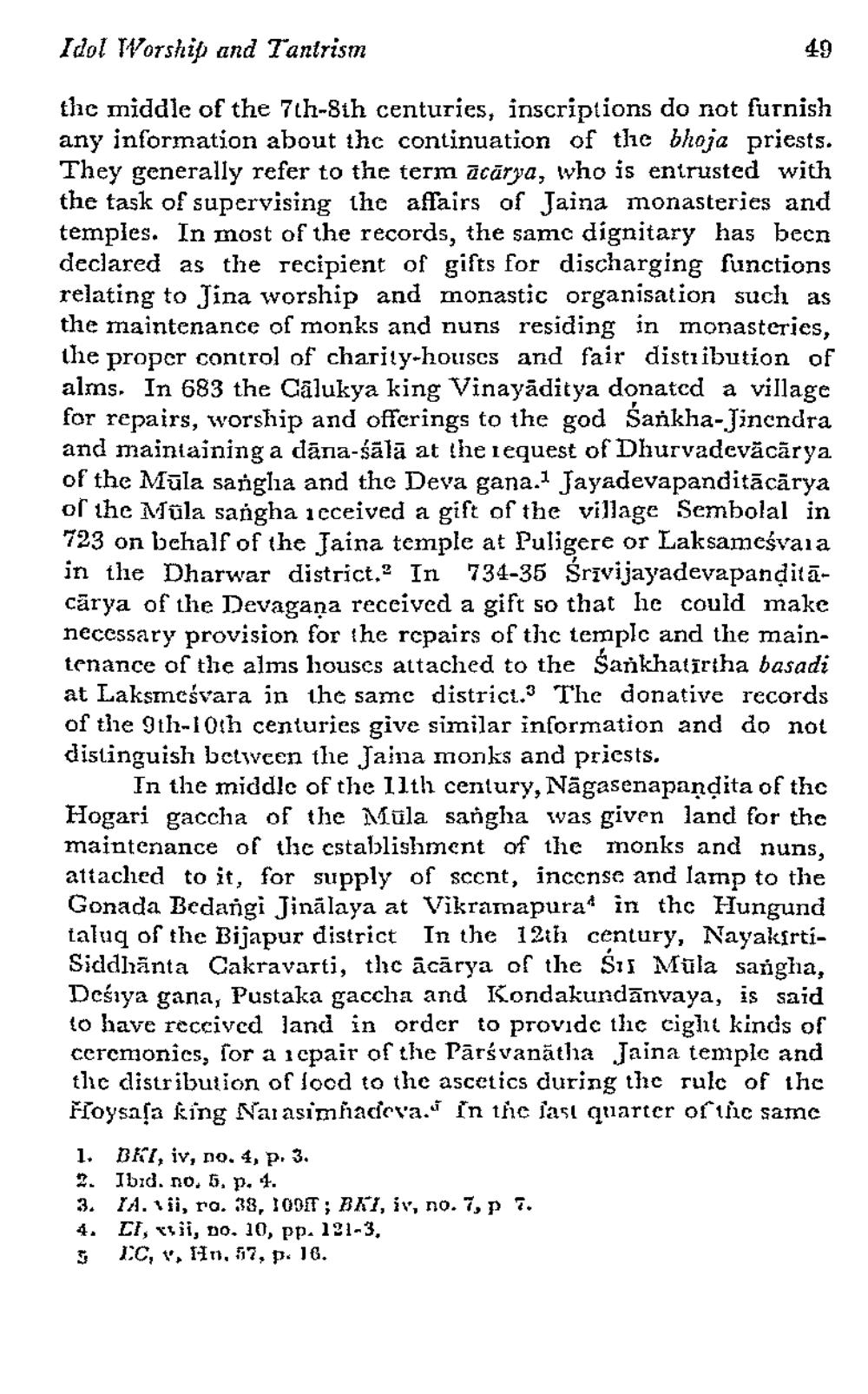________________
Idol Worship and Tantrism
49
the middle of the 7th-8th centuries, inscriptions do not furnish any information about the continuation of the bhoja priests. They generally refer to the term ācārya, who is entrusted with the task of supervising the affairs of Jaina monasteries and temples. In most of the records, the same dignitary has becn declared as the recipient of gifts for discharging functions relating to Jina worship and monastic organisation such as the maintenance of monks and nuns residing in monasteries, the proper control of charity-houses and fair distıibution of alms. In 683 the Cālukya king Vinayāditya donated a village for repairs, worship and offerings to the god Sankha-Jincndra and maintaining a dāna-śālā at the request of Dhurvadevācārya of the Mūla sanglia and the Deva gana.1 Jayadevapanditācārya of the Müla sangha received a gift of the village Sembolal in 723 on bchalf of the Jaina temple at Puligere or Laksamcśvara in the Dharwar district.? In 734-35 Śrīvijayadevapanditācārya of the Devagana received a gift so that he could make necessary provision for the repairs of the temple and the maintenance of the alms houses attached to the Sankhatîrtha basadi at Laksmcśvara in the same district.3 The donative records of the 9th-10th centuries give similar information and do not distinguish between the Jaina monks and priests.
In the middle of the Ilth century, Nāgasenapandita of the Hogari gaccha of the Müla sangha was given land for the maintenance of the establishment of the monks and nuns, attached to it, for supply of sccnt, inccnse and lamp to the Gonada Bedangi Jinālaya at Vikramapura" in the Hungund taluq of the Bijapur district In the 12th century, NayaksrtiSiddhānta Cakravarti, thc acārya of the Sis Mula sangha, Deśıya gana, Pustaka gaccha and Kondakundānvaya, is said to have received land in order to provide the cight kinds of cercmonics, for a 1cpair of the Pārsvanātha Jaina temple and the distribution of lood to the ascetics during the rulc of the Floysasa king Narasimhaceva. În the last quarter ofiiie same 1. BHI, iv, no. 4, p. 3. 2. Ibid. no. 5, p. 4. 3. TA. vii, ro. 38, IODIT; BKI, ix, no. 7, p 7.
CI, si, no. 10, pp. 121-3, 5 CC, v, Hn, 57, p. 16.




